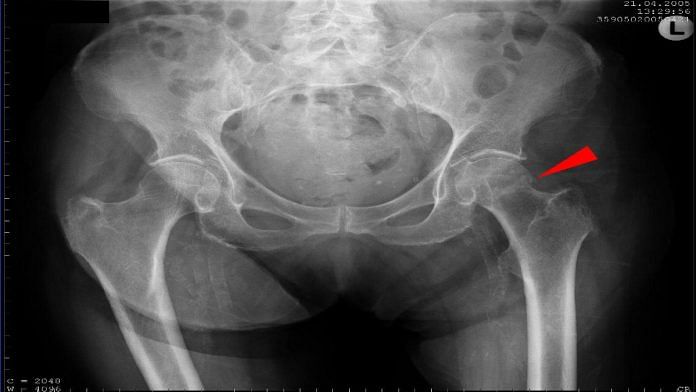New Delhi: A team of researchers at the Indian Institute of Technology (IIT) Guwahati have developed an Artificial Intelligence (AI) model to predict how a person’s thigh bone fractures would heal after surgery.
Developed by Souptick Chanda, Assistant Professor at IIT Guwahati and his team, the model can be used to help reduce the healing time and pain apart from bringing down the economic burden for patients who undergo treatment for thigh fractures.
The model assesses whether a fracture fixation will work for a particular patient by predicting the healing outcomes depending on personal physiologies and fracture type.
While the research paper describing the model was published in the journal PLoS One in July, IIT Guwahati released a statement Thursday.
According to the team, incidences of thigh-bone and hip fractures have increased significantly due to the increasing geriatric population in the world. An estimated 2 lakh hip fractures occur every year in India alone, most of which require hospitalisation and trauma care.
Traditionally, treatment for hip fractures includes bone plates and rods to bridge the fracture site and promote bone healing. Fracture treatment methods are intuitively chosen by surgeons based on their experience, and there is no way of predicting the efficacy and success of the treatment method chosen.
“AI has tremendous potential when it comes to understanding and predicting complex biological phenomena and hence, can play a big role in health sciences applications,” Chanda said in a statement.
The researchers plan to develop a software/app-based on the algorithm that can be used in hospitals and other healthcare institutions as part of their protocols for fracture treatment
Also Read: Swiss researchers may have found a new way to ferry cancer drugs to tumours — ‘magnetic’ bacteria
Can be adapted to veterinary fractures
The research team used a combination of mathematical analysis and an AI tool, Fuzzy Logic, to understand the healing process of fracture after various treatment methods.
The team also examined the influence of different screw fixation mechanisms to compare the fracture healing efficacies of each process. The predictions of healing made by the model agreed well with experimental observations, pointing to its reliability, the team said.
In addition to various biological and patient-specific parameters, the AI tool also accounts for different clinical phenomena, such as smoking, diabetes, etc. The model can also be adapted for veterinary fractures which are, physiologically and in various aspects, similar to those occurring in human patients.
Currently, the team is conducting animal studies with a team from North Eastern Indira Gandhi Regional Institute of Health and Medical Sciences Hospital in Shillong to validate and fine-tune certain parameters of the AI tool.
(Edited by Theres Sudeep)
Also Read: Potential ability of exercise to reverse Alzheimer’s striking, finds new US study






